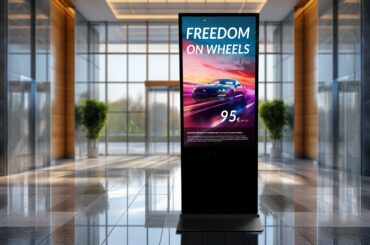Vending machines tend to fade into the background of our world. And the only time they matter is when you are really hungry or thirsty. But the simple vending machine is on the verge of breaking out into its own. This article will look at the history of vending retail, as well as how corona has helped to change the equation and push them into the spotlight.
History of Vending Machines
The idea of a vending machine is actually much older than most people think. It even goes all the way back to the ancient Greeks, who set up a device that dispensed holy water inside Egyptian temples. When a coin was deposited, it fell into a pan attached to a lever. The level opened a valve, which allowed water to flow out. The pan continued to tilt under the weight of the coin until it fell. At this point, a counterweight snapped the lever and turned off the valve. Sounds like a pretty sophisticated way to get some water.
By 1615 a more modern interpretation of the vending machine had started to show in English taverns. Vending machines quickly became a way to discreetly get items. For example, in 1822, Richard Carlile, a publisher and bookshop owner in England built a vending machine that allowed customers to buy banned books and newspapers.
By the time the 1880s rolled around vending machines had moved on to dispensing postcards, envelopes, and notepaper. They were mainly placed at railway stations and post offices throughout England. By 1893 in Germany, the vending machine had moved into dispensing something that would be more familiar to today’s users, chocolate.
Benefits of Modern Vending Machines
Corona: Changing the Rules
The arrival of the coronavirus has had an effect on almost every industry around the world. Since its arrival, there has been a scramble to find ways to adapt and overcome the new challenges that it presents. Restaurants and bars have been hit especially hard. If you’re in the restaurant industry and looking for good tips and strategies on how to reopen your business safely and securely, check out one of our latest blog posts on the subject.
Despite the best efforts, there is no doubt that the post-COVID world will look and feel different. Technologies that were marginalized will find that they have a new opportunity to break out. With the current limitations on indoor dining, vending machines have a unique chance to rethink how we use them.
The automat to me is probably the greatest distribution for food and fast food. I got really turned on to the whole concept.
Stratis Morfogen, Founder of Philippe Chow
That doesn’t mean that everything is smooth sailing for vending machines. They have been subject to many of the same challenges that traditional retail has been. It’s hard to sell a product that is dependent on foot traffic when people are stuck at home. In early July 2020, the AI vending machine company Stockwell closed up shop. In Europe things aren’t looking better, with Paolo Ghidotti, president of the European Vending & Coffee Service Association (EVA), calling for more support for the industry.
EVA claimed that vending operators have reported business losses of up to 90% due to employees shifting to working at home. This is due to roughly 80% of vending and coffee machines being located in offices and workplaces.
But there are also positives to the coronavirus that the vending machine industry can take advantage of. For example, vending machines help enforce social distancing, contactless payment options, and help to reduce labor costs.
Expanding the Payment Options
Most countries around the world have been shifting towards expanding electronic payment options. It’s important for the vending industry to keep up with consumer preferences and offer quick and simple, contactless payment methods to consumers.
Cashless payments are not only convenient for the customer. They also help to reduce the time that companies have to spend collecting and counting money. Not to mention, the potential for theft and vandalism that occur more frequently with cash. The graphic below shows the growth potential of the contactless payment market in the United States.
The vending industry has been working to step up its game, with companies such as Nayax launching apps that cater to mobile vending payments. In May 2019, Stora Enso launched a line of smartphone-operated vending machines with RFID. When a product is removed and the cabinet door is closed, the consumer is charged via the app for any items which they have taken out.
New and Fresh Options
This is one area where the United States can take some inspiration from the rest of the world, which has been experimenting with what vending machines have to offer. For example, in Japan, it is normal at ramen restaurants to order from a vending machine and then hand a ticket with your order over to have it cooked. However, Shiba Ramen a California-based chain has begun using automated ordering. While they have had some growing pains with individuals who are unfamiliar with ramen, given the increase in wages it is a concept that is likely to continue.
Another pioneer in the introduction of new and fresh vending options is Farmer’s Fridge. They focus on nutritious salads, wraps, and bowls with fresh ingredients that are made and delivered overnight to their vending machines. The short video below shows what goes into making fresh products show up in a local vending machine.
Integrating the Latest Technology
Behind the scenes, the industry has been investing in new technology that will allow machines to maintain the temperature (hot or cold) better than before. When consumers weren’t sure if the food that they received was the right temperature, they were less likely to buy items from the machines. But recent advances allow food to be warmed up to 150 degrees. Additionally, UV light helps to act as a disinfectant, which is increasingly important during coronavirus.
The Internet of Things (IoT) has finally arrived in the vending machine world. Smart sensors are being used that provide real-time information on inventory levels to help simplify the resupplying process. Additionally, it also analyzes customer preferences, which allows businesses to find ways to increase their profit margin.
Vendors are also using new technologies to help identify customers, such as facial recognition. For example, the Luce X2 vending machine uses motion sensors that detect when a customer is approaching and a camera to recognize the individual. It’s able to provide a personalized menu based on the individual’s purchase history and known preferences. Additionally, it’s able to limit the buying of age-restricted items.
Filling a Void
Vending machines have put themselves in a good position to help capitalize on some of the most recent trends. Additionally, the limitations imposed on indoor dining due to the coronavirus offer these machines another opportunity. Combined with new offerings and cutting-edge technology, the future of vending machines looks bright.






